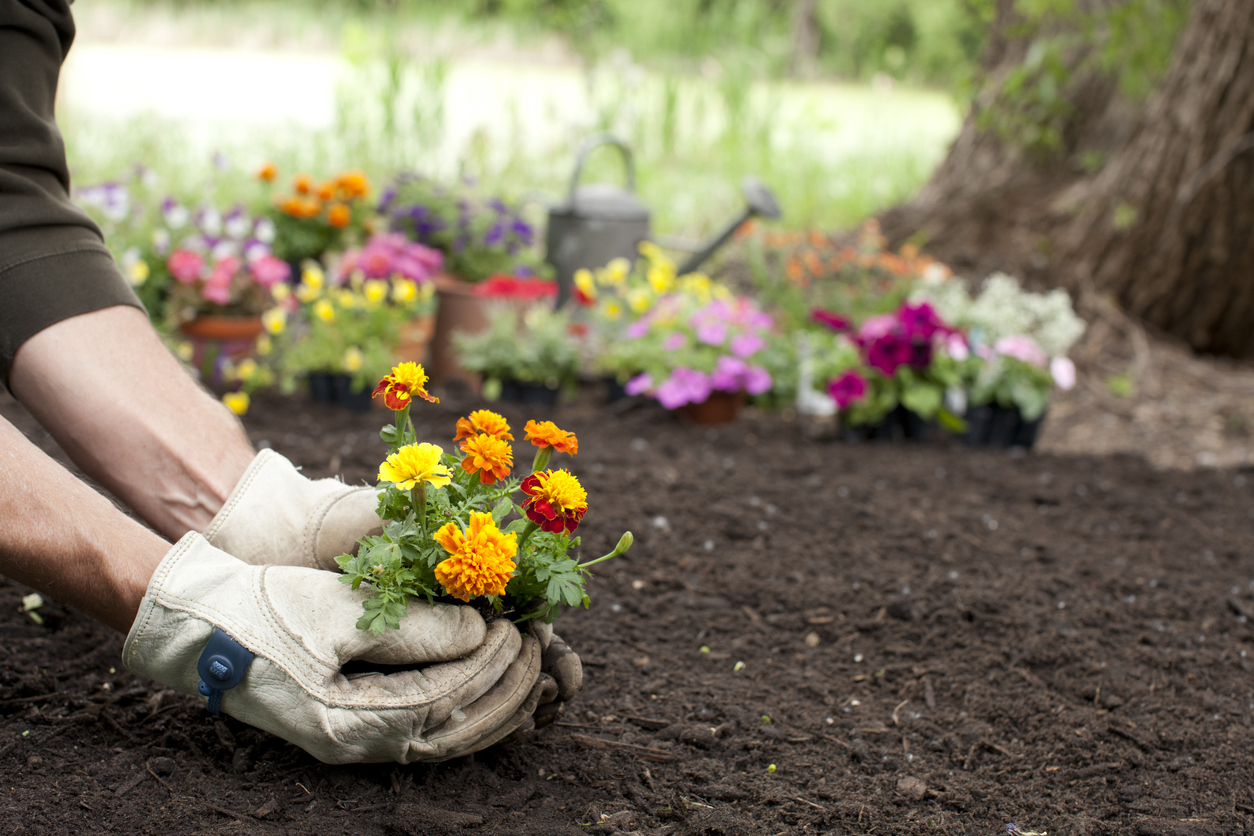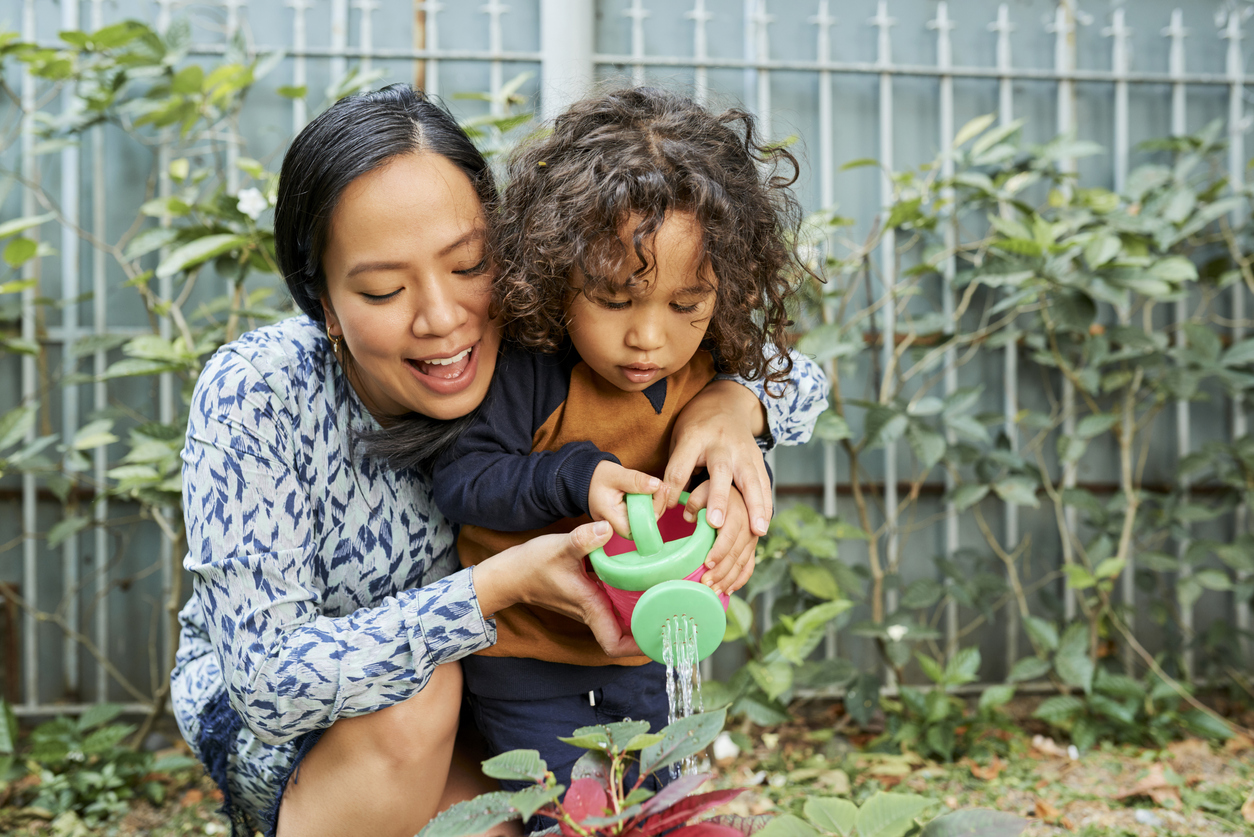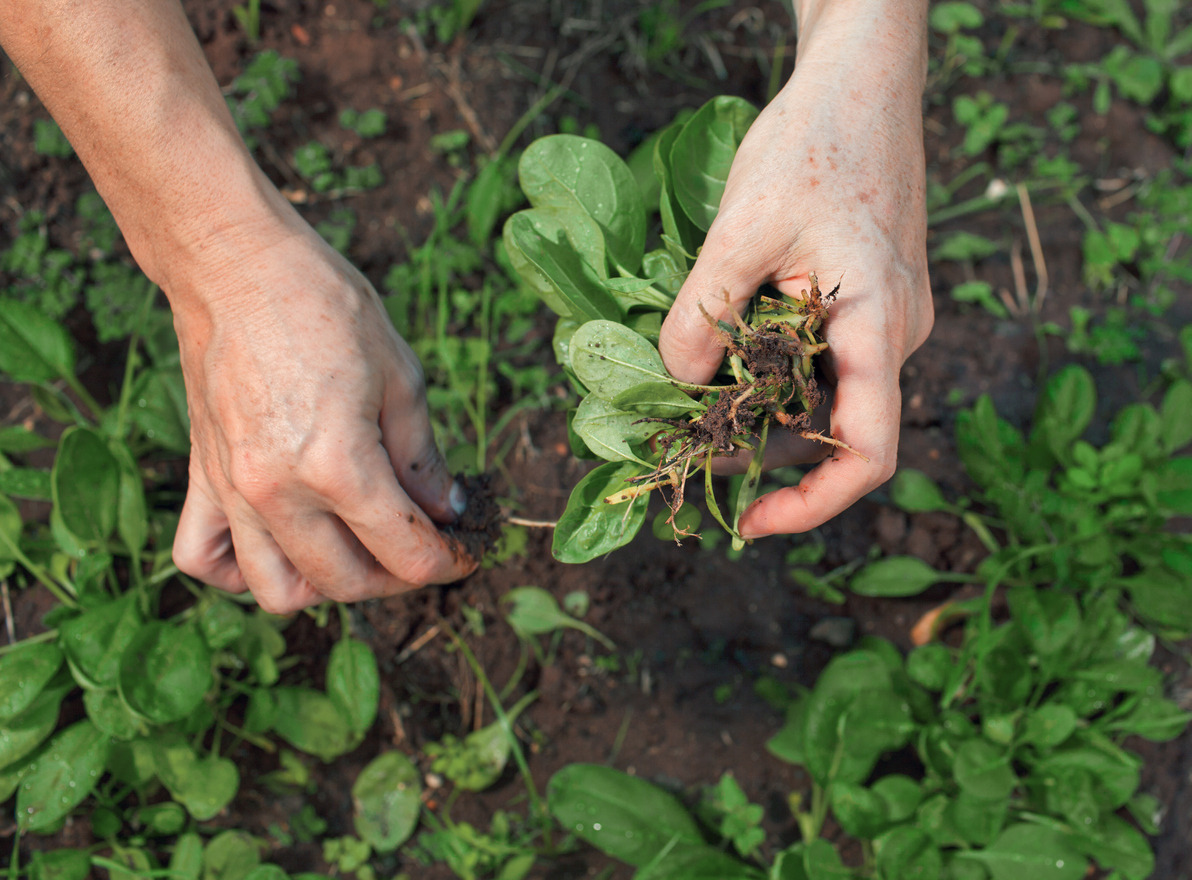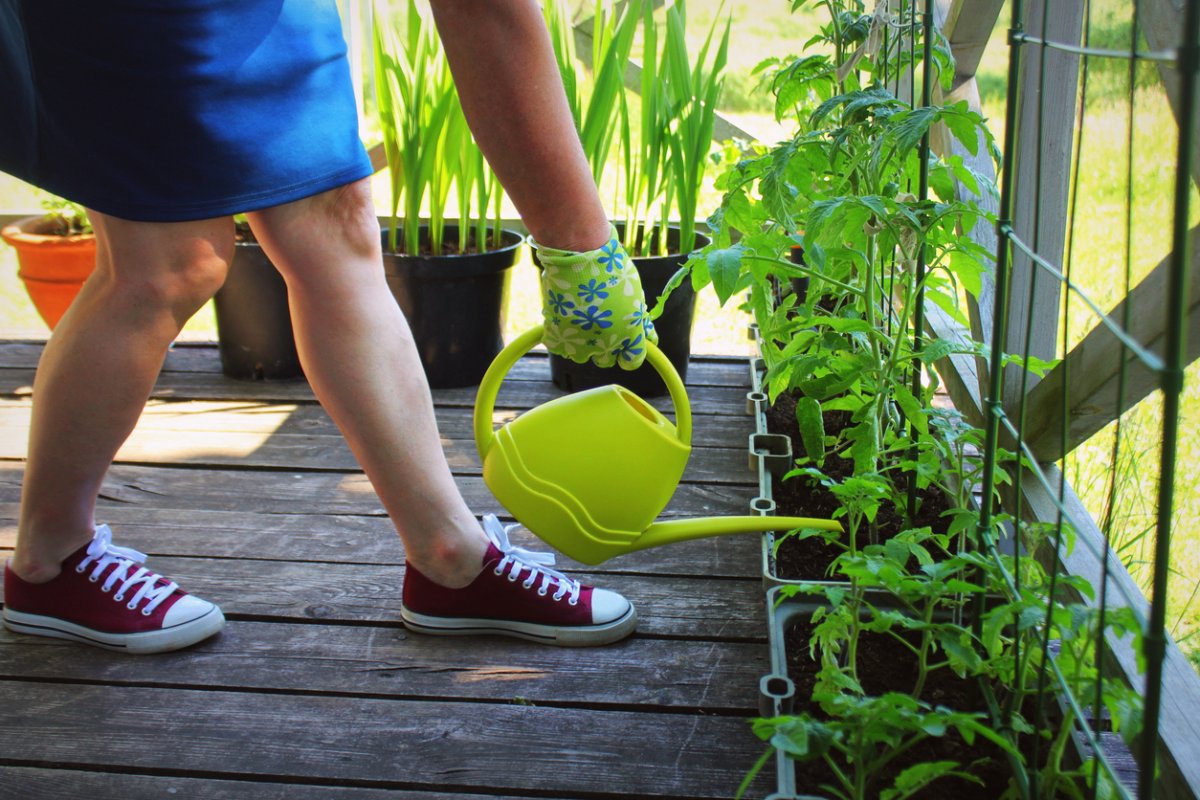We may earn revenue from the products available on this page and participate in affiliate programs. Learn More ›
Over the past few years, seed companies and nurseries nationwide have experienced huge spikes in sales due, in large part, to Americans keeping to their homes—that, and finding that their staple foods were either in short supply or had skyrocketed in price. Whether you’re interested in harvesting your own fruits and vegetables or simply want to bring more beauty to your backyard, you can’t just throw some seeds in the ground and expect success. Start scrolling to get clued in to the crucial gardening basics sure to get you bountiful results.

1. Plan your garden in accordance with your hardiness zone and first and last frost dates.

Plant “hardiness” refers to the intensity of cold a plant can withstand, so if you want your plants to thrive, put in species known to flourish in your climate. The United States Department of Agriculture’s map of plant hardiness zones, numbered 1 to 13, is based on the average lowest annual temperatures throughout the country. Use this tool to determine which zone you’re in, and only plant trees, shrubs, and perennial plants and seeds that are hardy in your area. The exception to the rule are plants you’ll only grow in a single season, such as annual flowers or summer vegetables.
It’s also important to know your first and last frost dates. The time between your last frost of spring and your first frost of fall is your growing season. The length of your growing season determines when you should plant and what kinds of plants you can grow.
2. Sun exposure is the most important factor for gardening success.

Seeds and plants at garden centers are labeled according to how much sunlight they require to thrive. All plants need sunlight to a greater or lesser degree in order to feed themselves (photosynthesize). While some plants are sun lovers, others, like azaleas and ferns, suffer if they’re exposed to too much direct sunlight. Observe your garden space before planting anything, keeping in mind that the angle of the sun changes through the day and through the seasons.
As a rule of thumb, “full to partial sun” means six or more hours of direct sunlight, combined throughout the day, while “full to partial shade” means four or fewer hours of direct morning sunlight. Only plant “full to partial sun” plants in places that receive direct midday and afternoon sunlight. Sunlight that is filtered through a canopy of trees may be considered “part sun” or “part shade.”
RELATED: 25 Shade-Loving Plants for Where the Sun Don’t Shine
3. Start small.

Successful gardening takes time, money, space and a commitment to learn and improve. The best way to rally these resources and remain committed is by starting on a small scale. Most new vegetable gardeners should begin with a garden layout of no more than 100 square feet. That could be four 2-foot-by-12-foot raised beds, or one 10-foot-by-10-foot in-ground plot. Flower gardeners have a tendency to spread plantings throughout the landscape, so keep it simple at first with just two or three priority areas, 30 square feet each. Once you’re comfortable at that level, you will know it’s time to expand.

RELATED: The 12-Inch Farm: 12 Foods You Can Easily Grow in Containers
4. Improving soil quality should be a constant goal.

No matter how great or poor your soil is, it can and should always be improved. Heavy clay soil needs better drainage. Sandy soil needs to hold more water and nutrients. The pH may be out of balance, or certain nutrients may be lacking. Improving the soil begins with testing.
Home soil test kits are available, but nothing beats the information you’ll receive from your county’s Cooperative Extension Service, for a fee of $15 to $20. (To find your local CSS, type your county, state, and the words “extension service” into a search engine.) You’ll send a dry sample of your garden soil, and they’ll return a detailed analysis of its chemical and physical properties, plus ways to improve it. For instance, if your soil pH is out of range, they will recommend the amount of lime or aluminum sulfate to correct it. They also will let you know how much nitrogen, phosphorus, potassium, and other nutrients you should add with fertilizer to grow healthy plants.
RELATED: 12 Gardening Mistakes That Are Killing Your Plants
5. Be prepared to water plants plentifully.

Bottom line: Water is life to plants; indeed, young seedlings can die in a matter of hours if they dry out. Most garden plants need about an inch of water each week. Automating this task with drip irrigation or sprinkler systems can be helpful if you are going out of town for a few days, but hand watering is often best because it is simple, inexpensive and, unlike automated systems, you can deliver the right amount of water to each plant. Purchase a quality garden hose with a gentle watering wand that will allow you to soak your plants without blasting them with a strong jet of water.
RELATED: The Dos and Don’ts of Watering Plants
6. Sometimes it’s best to buy plants, other times it’s better to buy seeds.

Seeds are cheaper than plants, but if you let price be the sole determining factor, you’ll shortchange your garden. Consider the length of your growing season and the needs of the young plants as you decide whether to go with seedlings or seeds.
Transplanting seedlings makes an immediate impact and, with such plants as petunias and pansies, you’ll be able to forgo the equipment, indoor space, and labor required when starting seeds. It also makes sense to buy seedlings of plants that take a long time to mature, such as tomatoes, or for small delicate species like cabbage, which need special protection early on.
On the other hand, such garden vegetables as carrots and beets do not transplant well and should be directly sown as seeds into your garden. And such species as beans and sweet corn tend to grow so quickly from seed that the added expense of seedlings doesn’t make much sense. Finally, specialty or heirloom plants, such species as Black Krim tomatoes and Empress of India nasturtiums, will only be available as seeds.
RELATED: 20 Totally Free Ways to Start a Garden This Year
7. Guard against garden pests and disease.

Insects and disease affect different plants in different ways, but a healthy plant is less likely to fall prey to these problems. Because each garden is a unique environment, the best pest offense is a good defense, by creating the healthiest environment for your plants.
Plants are stronger and more resilient when they have adequate sunlight, moisture, and good soil. Proper plant spacing and weed control are part of the equation as well. By providing a healthy growing environment and minimal resource competition you reduce plant stress and maximize your ability to thwart pests.
Still, insects and diseases may simply find their way to the plants they prefer. Should that happen—early blight on tomatoes and downy mildew on impatiens flowers, for instance—remove diseased plants immediately to avoid spreading to adjacent plants. For the early stages of an insect problem, start by simply removing the bugs by hand. If infestations get serious, you’ll have to decide between treatment with insecticide and removal of plants.
The expense of spraying often does not justify the results. Insecticides often only kill the adult stage, not eggs and larvae, which will reproduce if additional spraying isn’t administered at just the right time. To help you make the call, ask yourself: What is the price of the treatment? Is a new plant less expensive? If the infestation happens early in the season, it is possible that a new plant will grow and produce more quickly than the infested plant can recover. If the infestation is later in the season, there may not be enough time for the plant to recover.

RELATED: 20 Tips for Keeping All Critters Out of Your Yard and Garden
8. Mulch can work wonders.

Mulch is a soil protector that conserves moisture, insulates against temperature extremes, protects against erosion, and helps to reduce weeds. Organic types of mulch like wood chips, pine needles, or straw, as opposed to plastic or rubber products, also contribute to overall soil health by promoting biological diversity. A host of fungi, insects, and other invertebrates gradually break down the mulch. Over time, as mulch decomposes, worms and other soil dwellers incorporate the residual organic matter into the soil, improving soil structure and bringing nutrients into direct contact with plant roots.
RELATED: The Dos and Don’ts of Mulching the Garden
9. Weed control requires vigilance.

Weeds are simply any plants that are in the wrong place, like elm tree seedlings in a flower garden or Virginia creeper in a sweet corn patch. Left unchecked, weeds absorb water, scavenge nutrients, steal sunlight, and generally out-compete the desired plants in your garden. To make matters worse, weeds can harbor plant diseases and insects.
Weeds constantly seek a foothold in well-prepared, nutrient-rich garden beds. Because chemical herbicides typically damage or kill desirable plants too, the most effective weed control in the garden is you, the gardener. Fight the war daily if possible, pulling weeds manually as soon as they appear.
Weed by hand in close proximity to your plants to avoid accidental damage. Cultivate open spaces and pathways in your garden so you’ll have access to plants and weeds. Tool-wise, stirrup hoes are easy to use, lightweight, and work well in the most open areas; for tight spots, the versatile CobraHead tool, which has a sharp blade on its curved business end, works like a charm.

RELATED: This Handy Tool is a Must-Have for Any Gardener
10. You have allies in nature that will help your garden grow.

Compost, an amendment that improves soil structure and feeds the plants, is a gift of nature. To help create it, pile up weeds, fallen leaves, and vegetable scraps in a corner of your garden or contain the material in a bin until it breaks down into dark, crumbly matter.
Pollinators like bumblebees and butterflies trigger fruit and vegetable plants and can increase yields in a food garden. To create an environment where they can thrive, minimize or eliminate insecticide use, and include plenty of flowering annuals like pentas and zinnias in your beds.
Encourage predator-prey relationships that promote healthy garden ecology with plants like dill, fennel, and parsley, which harbor such beneficial bugs as ladybugs, praying mantises, assassin bugs, and beneficial nematodes. Install a bird nesting box near your garden, too, to attract bluebirds and other predators that will eat pests.
RELATED: 8 Top Tips for How to Use Compost


